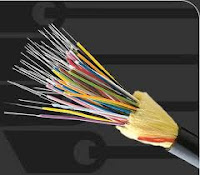INTERNET PROTOCOL (IP)
~ provides a common layer over dissimilar networks
~ used to move packets among host computer
~ consist of 32 bits
~ 4 octets of no. from 0-255
~ represented in decimal form instead of binary form
~ easy to remember the decimal no. rather than binary form
~ consist of two parts ; identify network and identify nodes
~ eg : 168.223.210.221
Class A Network
~ binary address start with 0
~ no. can be anywhere from 1-126
~ first octet is the identify network
~ eg : 108.187.212.206
Class B Network
~ binary address start with 10 ~ no. can be anywhere from 128-191
~ first two octets is the identify network
~ 127 is reserved for loopback
~ eg : 187.202.226.212
Class C Network
~ binary address start with 110~ no. can be anywhere from 129-223
~ first three octets is the identify network
~ eg : 212.167.203.224
Class D Network
~ binary address start with 1110~ no. can be anywhere from 224-239
~ used to support multicasting
Class E Network
~ binary address start with 1111
~ no. can be anywhere from 240-255
~ used for experiment and never been documented
DOMAIN NAME SYSTEM (DNS)
~ an internet service that translate domain namesinto numerical IP
~ eg : www.yahoo.com into 210.168.223.211
~ fx ; easier to remember
INTERNET SERVICE PROVIDER (ISP)
~ provides access to the internet
~ monthly fee ; provide software package, username, password and access phone no.
~ equipped with modem
HTTP
~ Hyper Text Transfer Protocol
~ define how messages are formatted and transmitted
~ command to the Web server to fetch and transmmit the request web page
~ transfer the contents of a web page into browser for viewing











